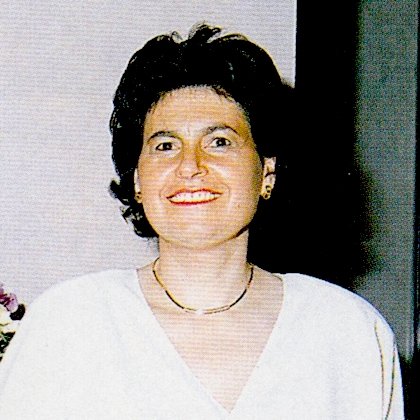Here are three books that remind everyone that women are not only soubrettes or wives living in the shadow of a husband who forces them to walk, ideally, two steps behind. One of them, however, is almost impossible to find. I myself had a stroke of luck. I saw it on the table of a restaurant and asked if they could give it to me for my library. It dates back 24 years, to 1989 when in Milan Acanthus published the hard work that Elio Chiodi dedicated to some great Italian (born, or adopted) female-chefs: When the chef is a woman, subtitle “Portraits and recipes from 21 Italian restaurant owners”.

Nadia Moroni, Il Luogo di Aimo e Nadia in Milan, in the Eighties
On the other hand, you’ll have no difficulty in buying the other two books, which were out in 2012. One is signed by
Licia Granello, the other by
Gabrielle Hamilton.
La Repubblica’s reporter has written for
Rizzoli Il gusto delle donne, “Il mestiere della tavola in venti storie al femminile” (
The Taste of Women); the volume by the chef of
Prune in New York,
Blood, bones and butter, arrived in Italy thanks to
Bompiani.
When you read them, especially the first two, you are confirmed of how women are in fact absent from the first rows, or marginally present, in one digit percentages. Man stands out and parades, receiving credit even when it was thanks to the couple, while the woman plugs away behind the frontline, or smiles in the dining room, or is the angel of a hearth that is not only the one back at home. Twenty-one names for Chiodi, twenty for Granello and even though they are the fruit of choices based on merit, it’s not like they had to compare hundreds, thousands of names as would have been the case for their male colleagues. These are black swans, so much so that, just to give an example, associations such as Donne del Vino exist to celebrate the best and remove them from a mortifying shadow, but there’s no equivalent for men.

Nadia Santini, chef at Dal Pescatore in Canneto (Mantua), 30 years ago
A quarter of a century ago,
Chiodi asked himself “how many women, how many female-chefs are part of the history of our gastronomy? Few indeed. In the important books of our Renaissance gastronomic heritage, women never appear”. The author finds the first after the end of the Second World War, thanks to “
Cesarina, cuoca bolognese di fama” (famous female chef from Bologna), then, in the Sixties, there’s
Mirella Cantarelli in Samboseto, near Parma. After that there are
Pina Bellini, of the
Scaletta in Milan, and
Lidia Alciati “in Costigliole d’Asti, wife to the famous
Guido”. But who knows why he doesn’t dedicate a chapter to
Bellini or
Alciati when at the end of the Eighties they certainly weren’t part of the past as is today the case for some stars of the time, such as
Amalia Ridolfi in Falconara (Ancona) and
Dina Biagi in Casalecchio (Bologna) or
Mary Barale in Boves (Cuneo),
Nadia Moroni and
Dorina Chionna in Milan who have recently chosen to enjoy their senior years.
Granello’s women, instead, aren’t just female chefs. In fact, these are only three, a minority: Annie Feolde (Enoteca Pinchiorri in Florence), Nadia Santini in Canneto (Mantua), Luisa Valazza in Soriso (Novara). Livia Iaccarino in Sant’Agata (Napoli) and Maida Mercuri in Milan are, instead, queens of the dining room. Santini and Valazza are also in Chiodi’s book, a demonstration of an enduring class. We could argue that some of the others are the authentic engines behind a business, such as Giannola Nonino in Friuli or Josè Rallo in Sicily, both true entrepreneurial giants but, in essence, it’s the same.
Being a woman doesn’t help in the workplace and in the kitchen it’s even worse. If you had any doubt, just read Blood, bones and butter, subtitled “The inadvertent education of a reluctant chef”, a female chef, as we’re talking of Gabrielle Hamilton of Prune. Forty-five year old, she has poured her life in 400 pages. Worth reading.